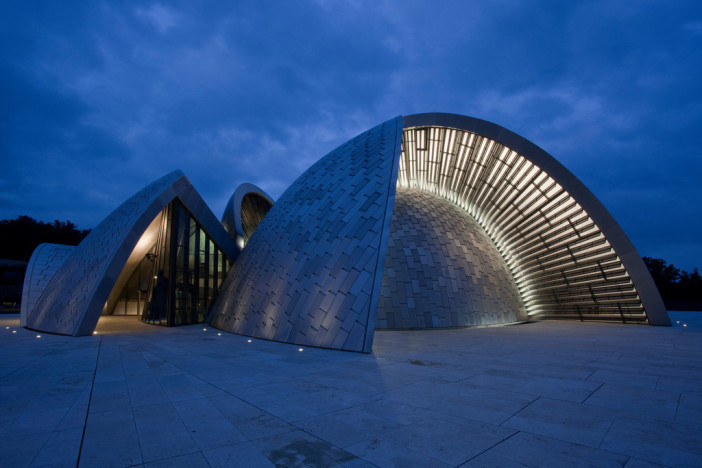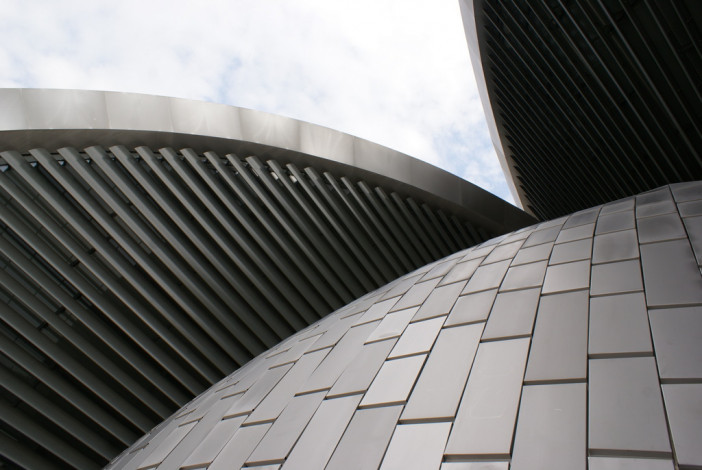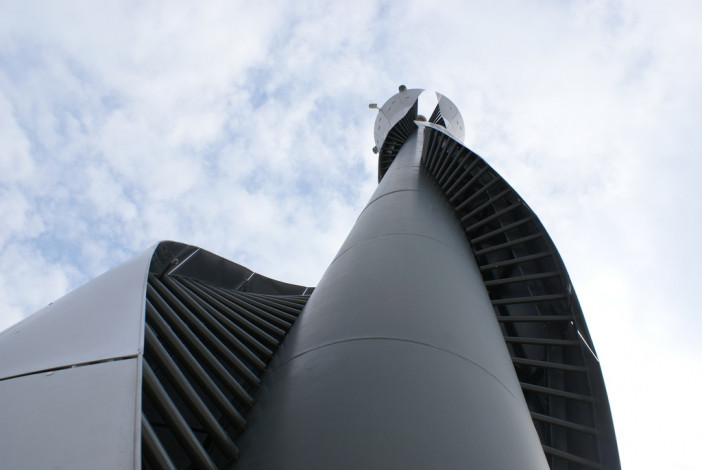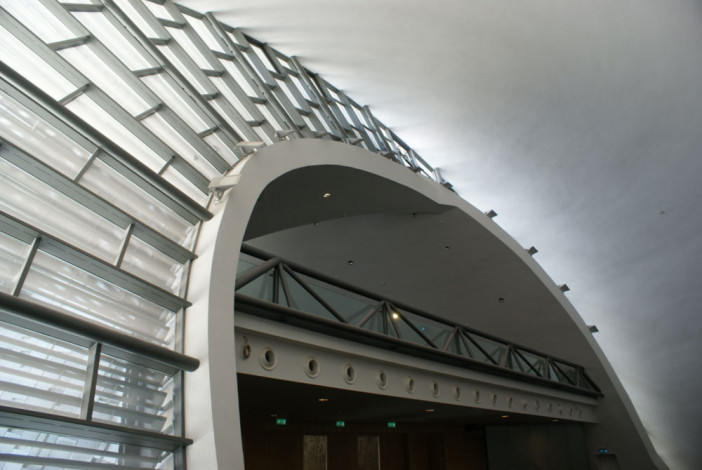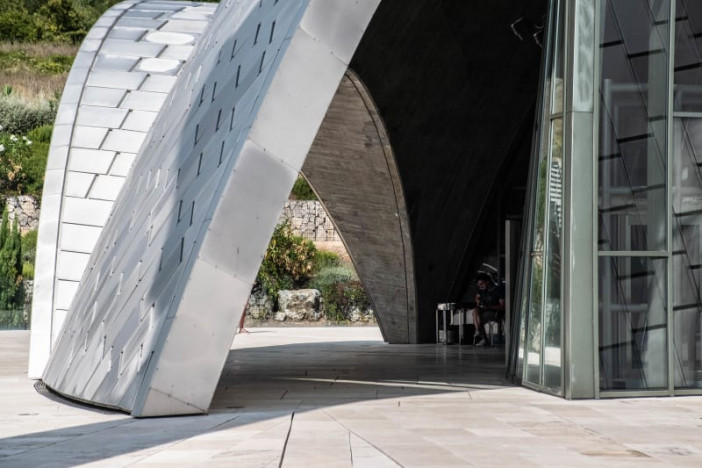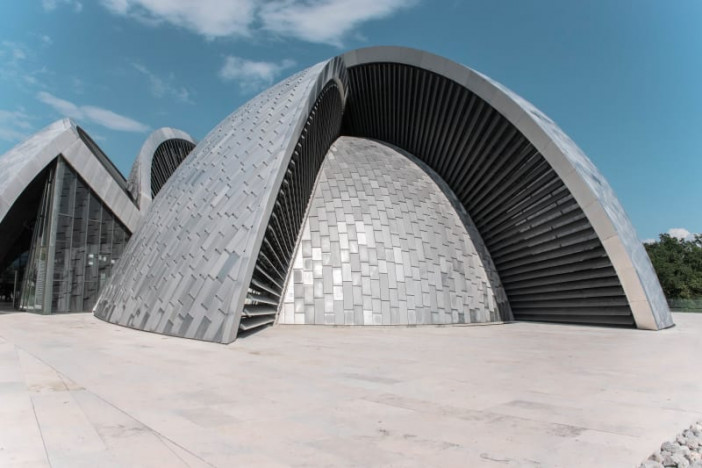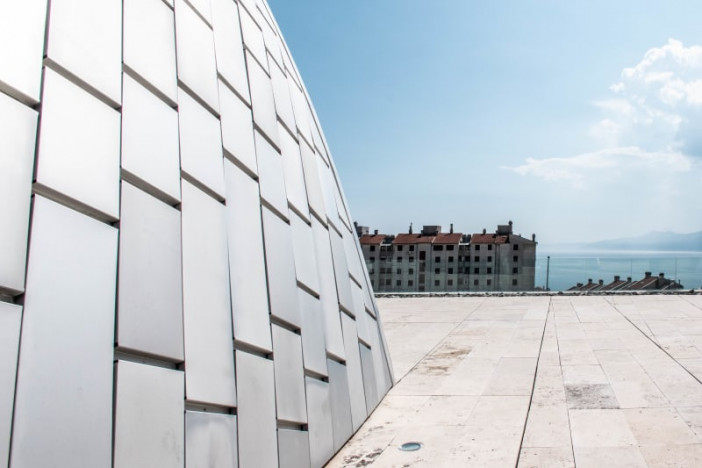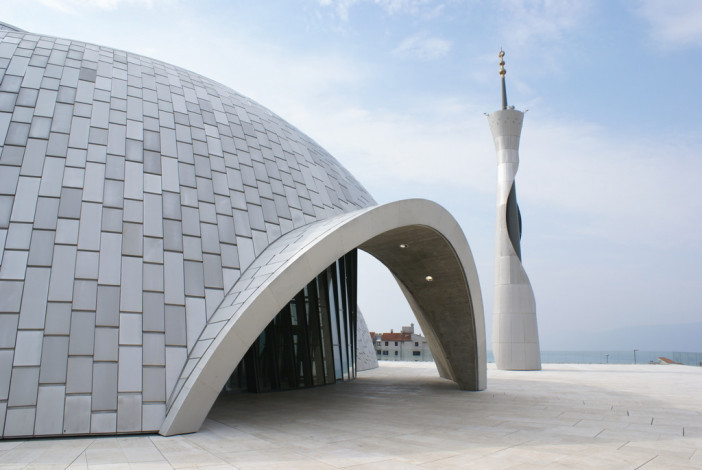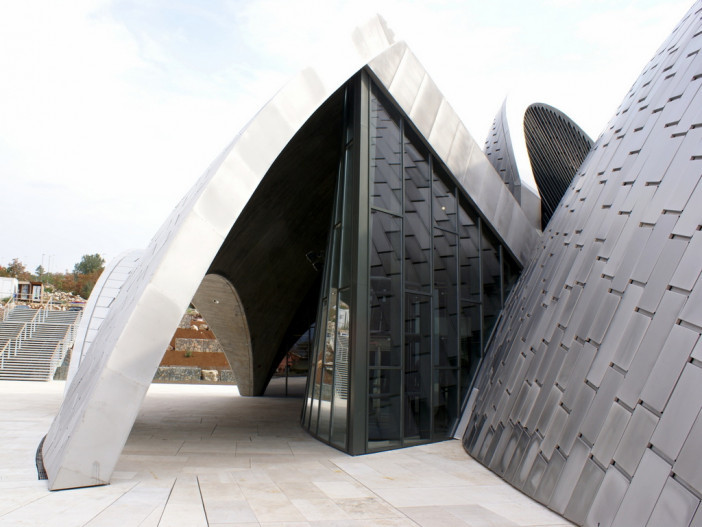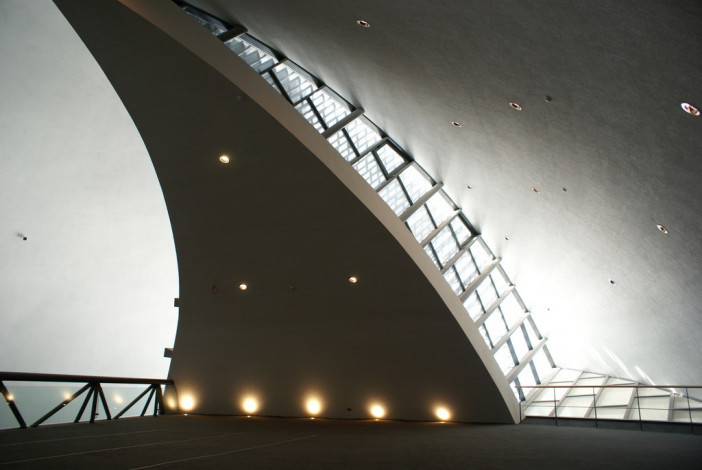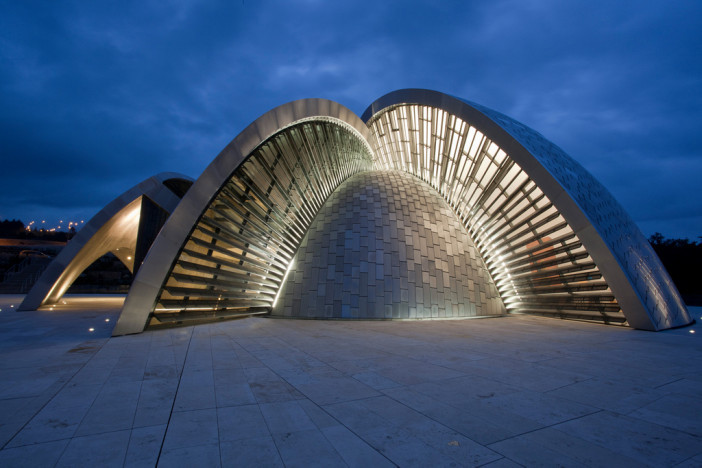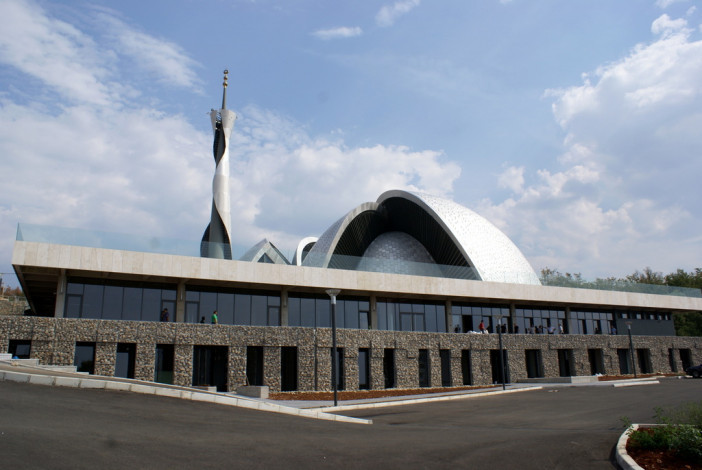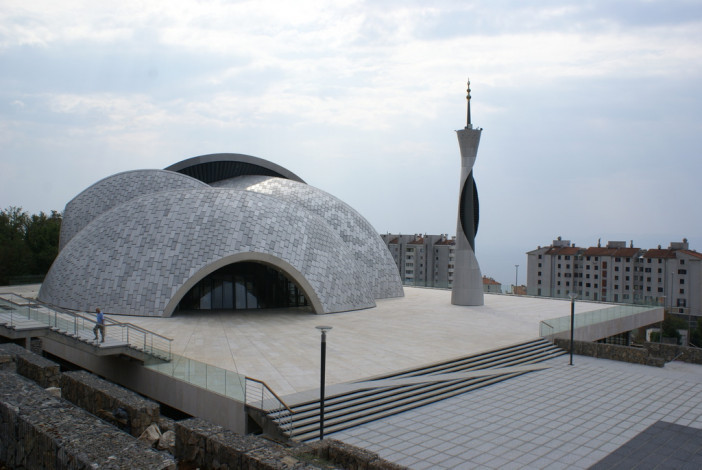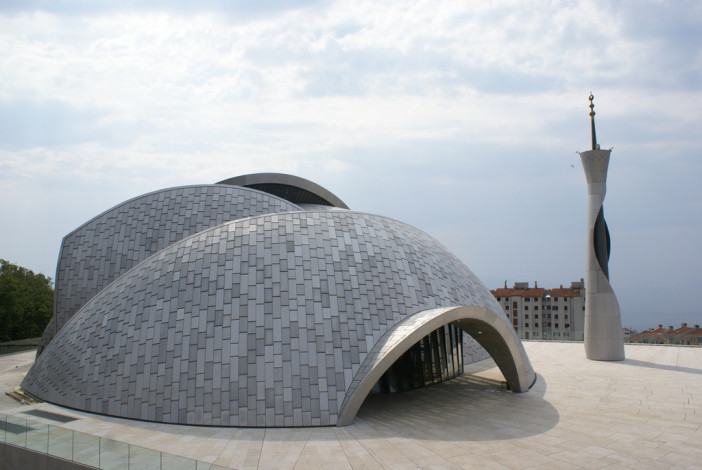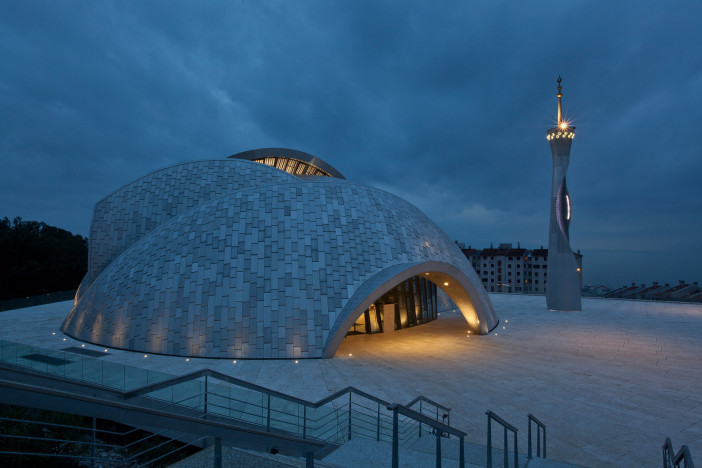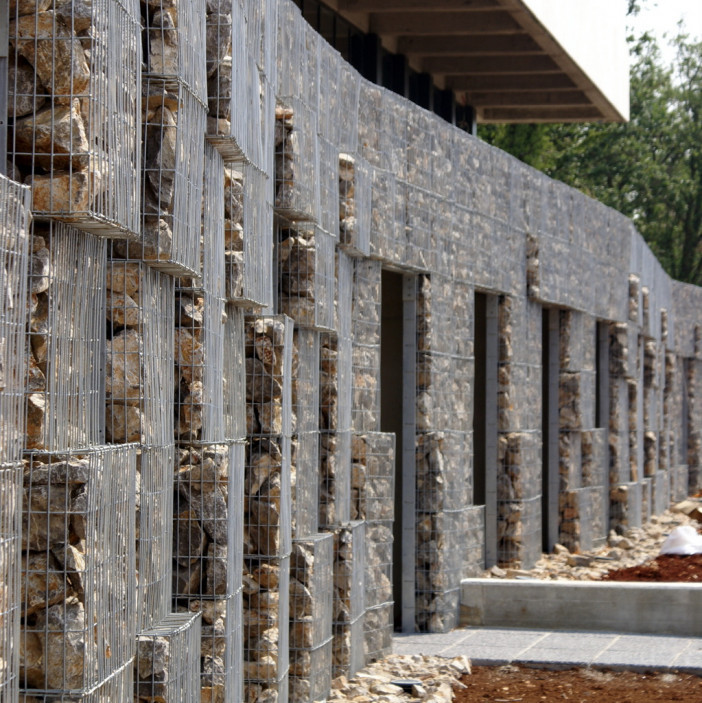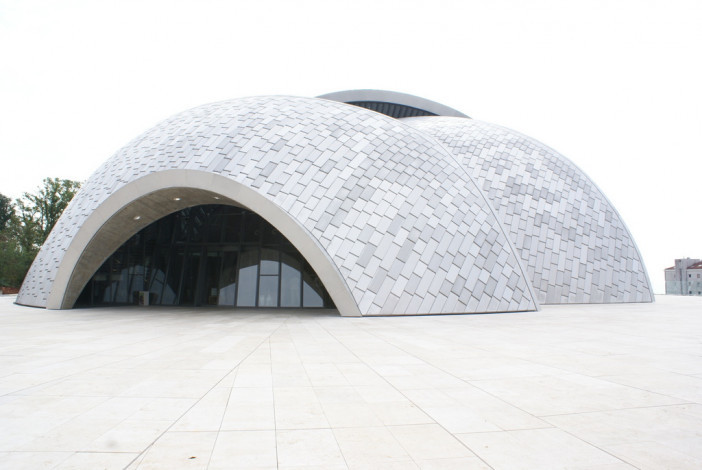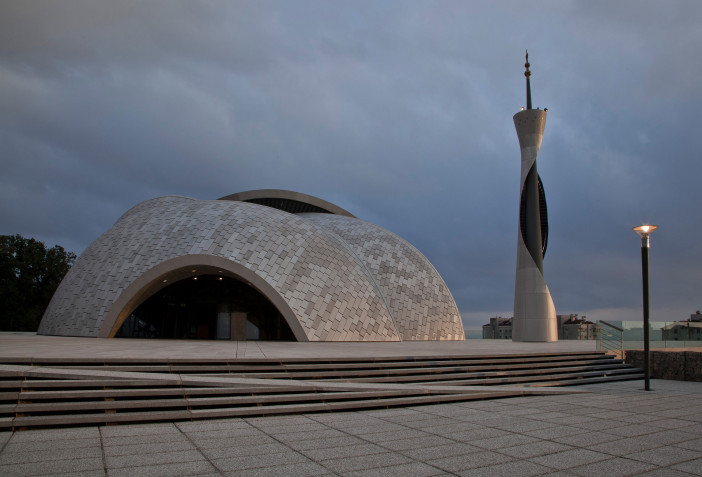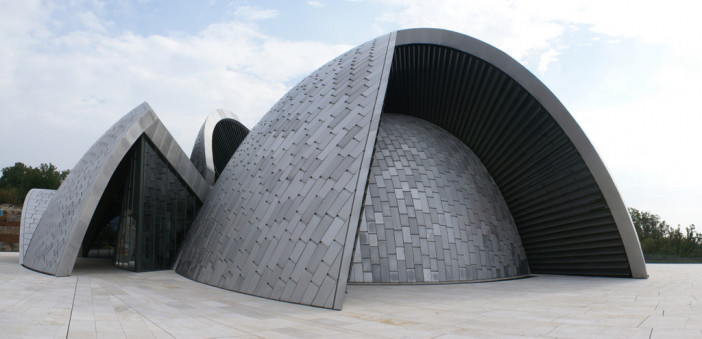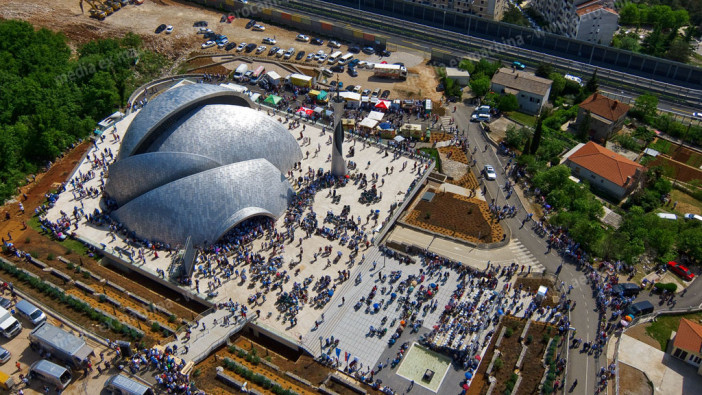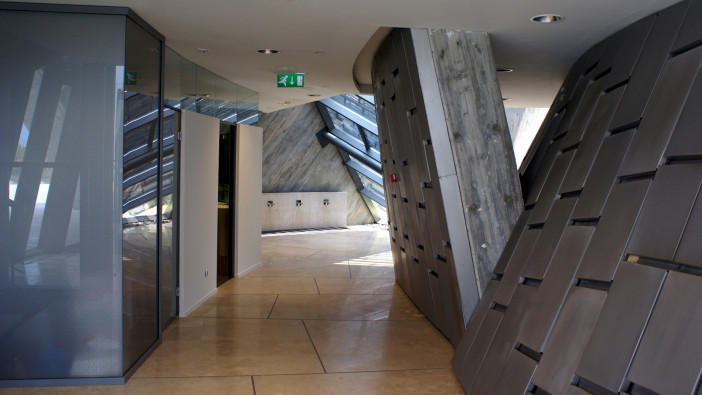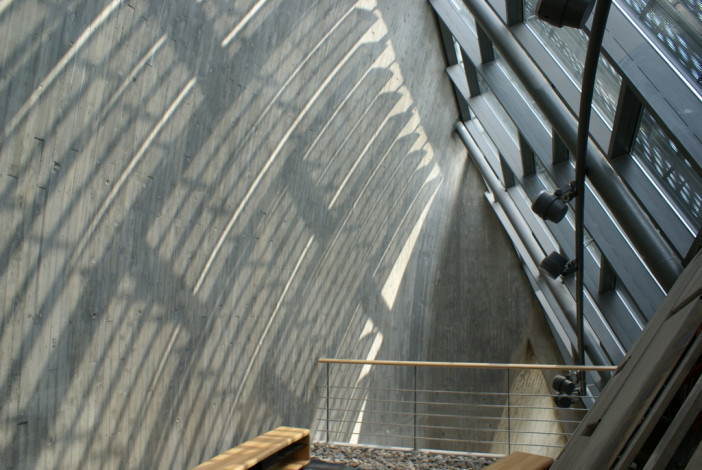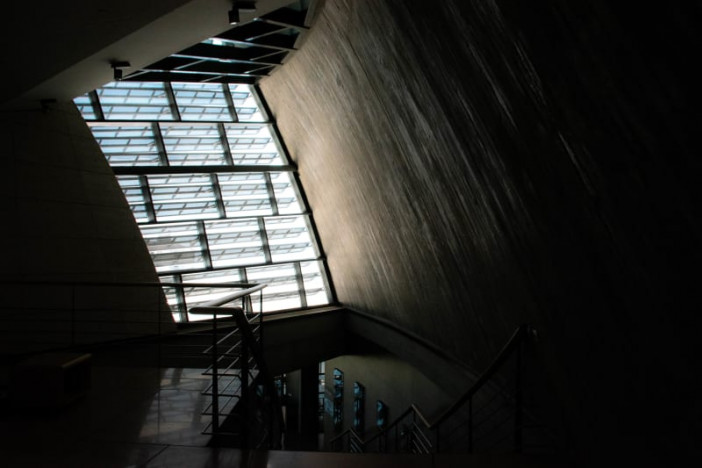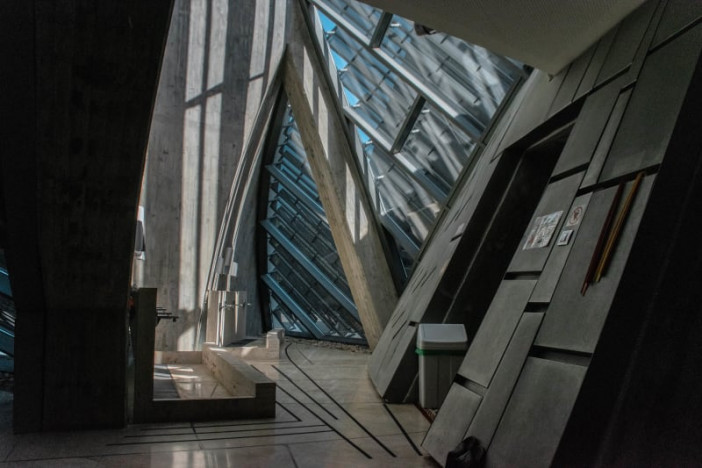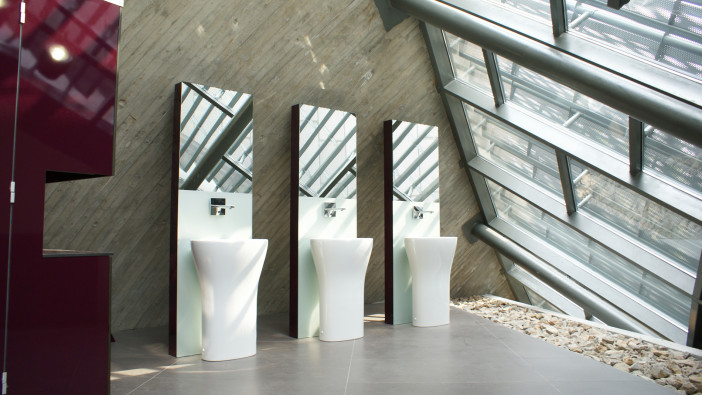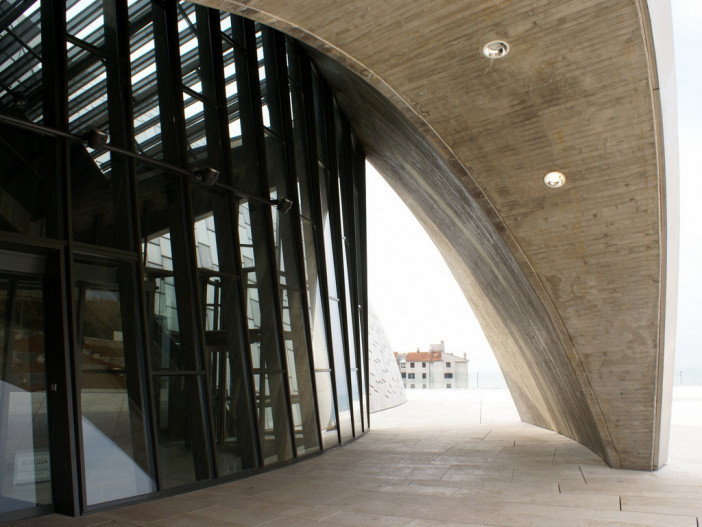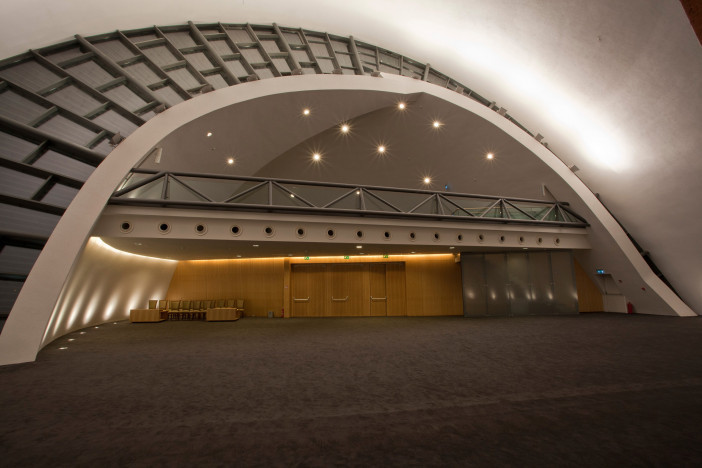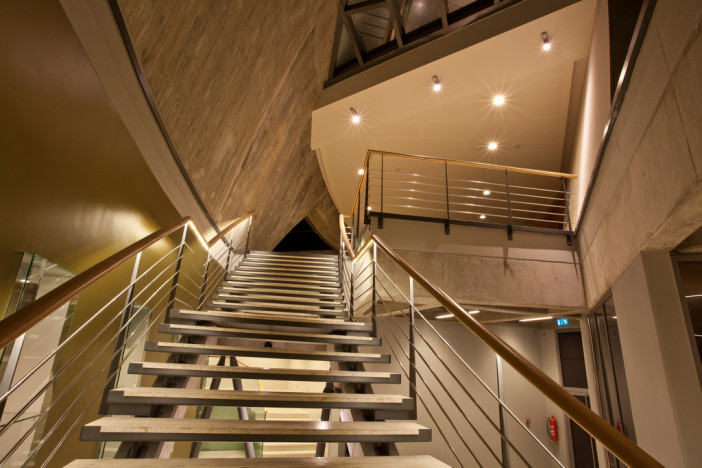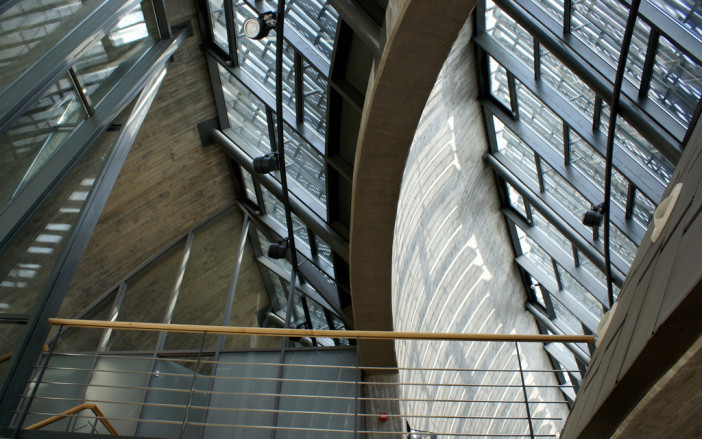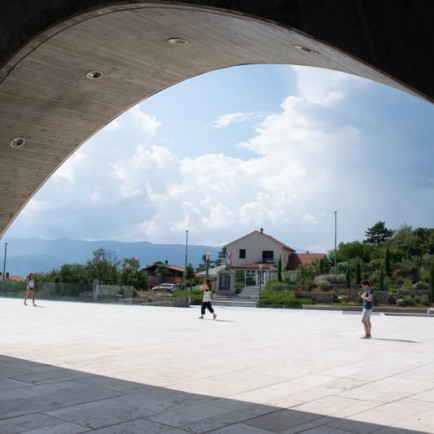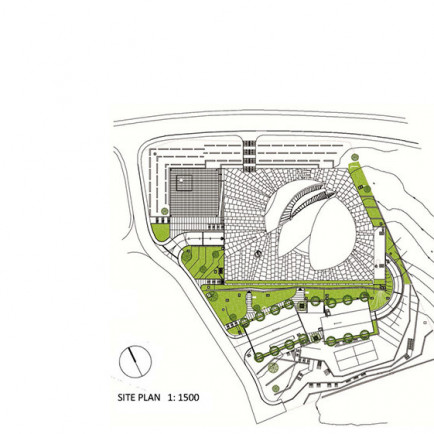The Islamic Center of Rijeka
History
The mosque
is the first mosque that been built on the shores of Adriatic since 5 centuries,
the ottomans were the last who built a mosque on the shores of the Adriatic. Dušan
Džamonja probably had in mind the rich tradition of dome construction of
Ottoman mosques on the shores of the Mediterranean. With his sculptural
approach he gave 'the new meaning to the old theme'.
Urban and Architectural
The mosque consists of five domes and
semi domes that visually constitute a
single object done with reinforced concrete. The
façade consists of metal sub-construction covered with ventilated stainless-steel
plates. The 23
meters high minaret is the dominant element on
the plateau; it consists of central conical steel cylinder and sheet-steel
mantle.
The
center has four levels: a gallery, ground floor and two floors, the facilities
in the center are congress center, restaurant, apartments, guest rooms, and an
underground car park.
Description
It
is the third mosque in Croatia and the first in the city. The mosque is the result of decades-old
aspirations of Muslims in Rijeka to have an adequate religious space.
This
is a building of high international artistic relevance designed by the famous
late sculptor Dušan Džamonja, in collaboration with architects Darko Vlahović
and Branko Vučinović. The sculptor created a
miniature model of the mosque, reflecting his well-known abstract sculptures.
Later, the architects have undertaken the task to implement this conceptual
idea in order to achieve the superior aesthetics of the project. The successful
'playing' with basic geometric shapes led to the fact that the building is
considered more as a functional sculpture, intended for culture and religion,
rather than the usual architectural building.
Located on a
10,800 m2 site placed on a large plateau, the Centre was conceived as a large
sculpture on a wide base, and has become a landmark of Croatia's busiest port
and one of the most beautiful religious buildings in Europe. A spiritual rather
than a formal Islamic expression was intended, so traditional decor was
avoided, showing the flexibility and willingness of a traditional Islamic
community to establish itself as part of modern society. The construction of the Mosque was mainly
sponsored by the state of Qatar.
References
Dušan Džamonja, Palagani Rahul · The Islamic Center of Rijeka مسجد · Divisare
Crowds Attend Mosque Opening in Rijeka, Croatia | Balkan Insight
The Mosque In Rijeka – A Masterpiece Of Contemporary Architecture - Magazine | Islamic Arts Magazine
Islamic Center Rijeka | Sightseeing | Rijeka (inyourpocket.com)
Details
الموقع
51000, Rijeka, Croatia
عدد المصليين
1,400
المعماري
تاريخ البناء
2013
Area
3,075 sqm
الرسومات المعمارية
الخريطة
History
The mosque
is the first mosque that been built on the shores of Adriatic since 5 centuries,
the ottomans were the last who built a mosque on the shores of the Adriatic. Dušan
Džamonja probably had in mind the rich tradition of dome construction of
Ottoman mosques on the shores of the Mediterranean. With his sculptural
approach he gave 'the new meaning to the old theme'.
Urban and Architectural
The mosque consists of five domes and
semi domes that visually constitute a
single object done with reinforced concrete. The
façade consists of metal sub-construction covered with ventilated stainless-steel
plates. The 23
meters high minaret is the dominant element on
the plateau; it consists of central conical steel cylinder and sheet-steel
mantle.
The
center has four levels: a gallery, ground floor and two floors, the facilities
in the center are congress center, restaurant, apartments, guest rooms, and an
underground car park.
Description
It
is the third mosque in Croatia and the first in the city. The mosque is the result of decades-old
aspirations of Muslims in Rijeka to have an adequate religious space.
This
is a building of high international artistic relevance designed by the famous
late sculptor Dušan Džamonja, in collaboration with architects Darko Vlahović
and Branko Vučinović. The sculptor created a
miniature model of the mosque, reflecting his well-known abstract sculptures.
Later, the architects have undertaken the task to implement this conceptual
idea in order to achieve the superior aesthetics of the project. The successful
'playing' with basic geometric shapes led to the fact that the building is
considered more as a functional sculpture, intended for culture and religion,
rather than the usual architectural building.
Located on a
10,800 m2 site placed on a large plateau, the Centre was conceived as a large
sculpture on a wide base, and has become a landmark of Croatia's busiest port
and one of the most beautiful religious buildings in Europe. A spiritual rather
than a formal Islamic expression was intended, so traditional decor was
avoided, showing the flexibility and willingness of a traditional Islamic
community to establish itself as part of modern society. The construction of the Mosque was mainly
sponsored by the state of Qatar.


